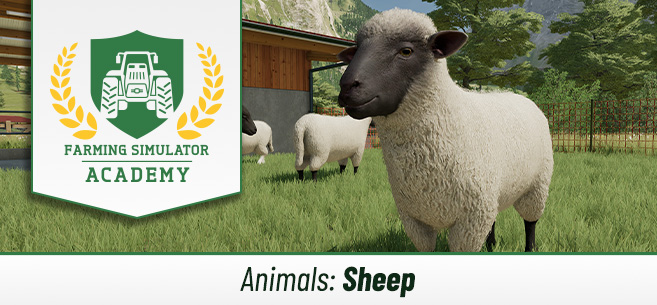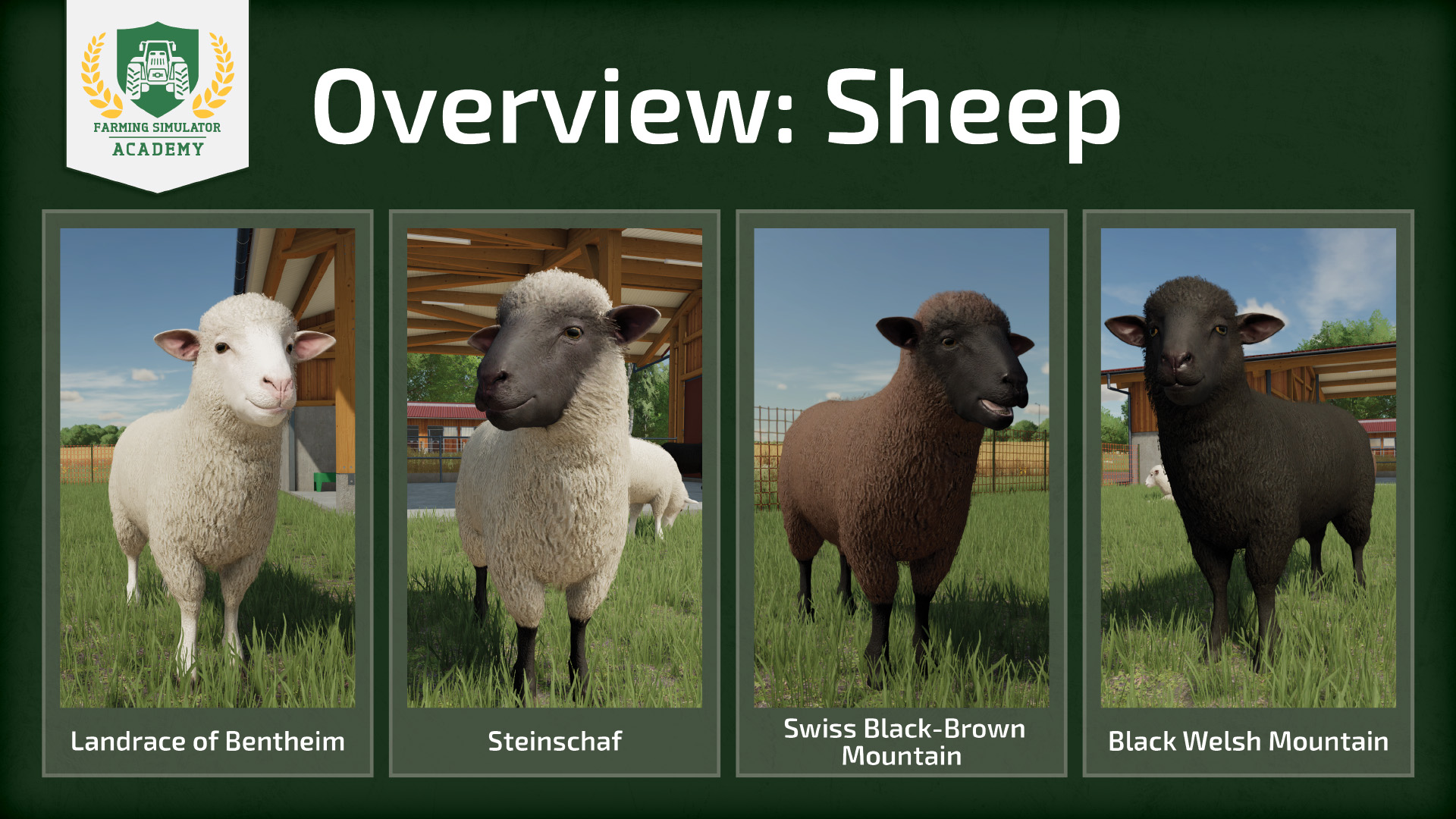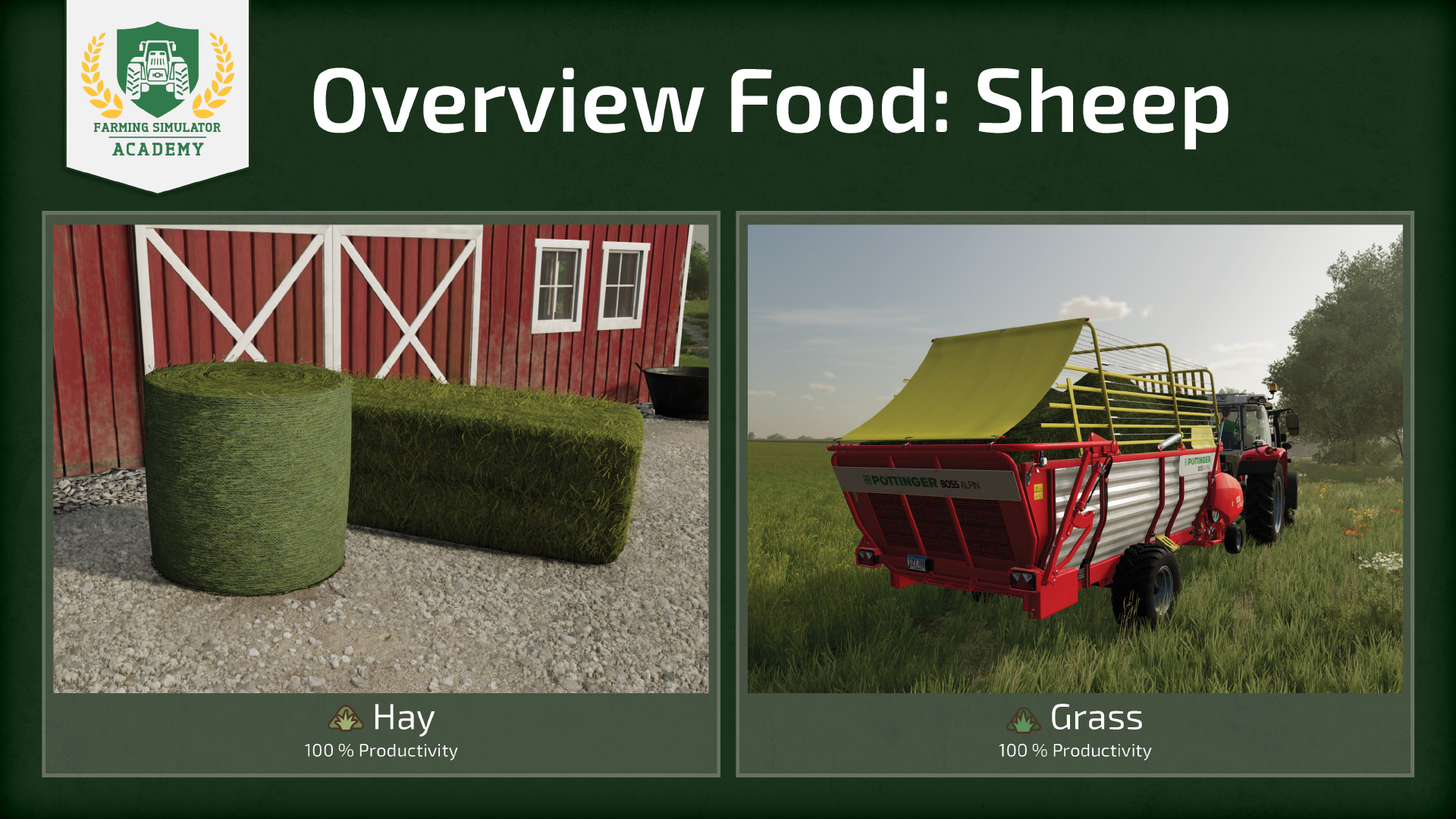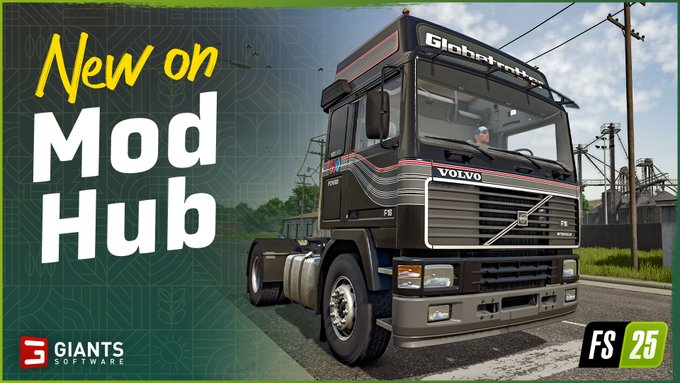[Animals 101] How to breed sheep

Welcome to your next "Animal 101" lesson of the Farming Simulator Academy! Today, we’re focusing on Sheep. We’ll show you how to feed, take care and sell those woolly companions. Let’s start!
Sheep husbandry: housing & feeding
In Farming Simulator, there are four breeds of sheep: Landrace of Bentheim, Steinschaf, Swiss Black-Brown Mountain, and Black Welsh Mountain. The only difference is their appearance. Choose which sheep look the most fluffy for you.
Housing options
Click here to learn more about icons.
There are multiple options for how you can accommodate your sheep: pastures, barns and large barns. While a sheep pasture requires you to provide feed and water and houses only a few sheep, the barns only require you to provide feed and have enough space for breeding. In all three types of housing, wool is produced. We recommend a barn instead of the pasture.
Feeding options
Sheep are very easy to care for. You can feed them grass or hay. Which one you choose, doesn't really matter. You can get them to 100% productivity (meaning wool production) with both. If you mow your fields yourself, it's of course easier to feed fresh grass without turning it into hay. Alternatively, you can buy bales of hay at the dealership.
How to get water: If you keep the sheep in a simple pasture, which requires you to provide water, you need to deliver it with a tank trailer. You get water by either filling it from a water tank that you can buy in the "container" tab of the construction menu, or you just reverse the tanker trailer attached to your tractor into water - a river or lake, for example. Water from a lake or river is free, tapping a tank container is not.
What you need for keeping sheep
- You need a tractor with a front loader attachment and a bale spike to deliver food and wool. To be able to use the front loader on the tractor, you must first purchase the necessary attachment from the dealer. To do this, drive the tractor to the dealer, park the machine in the vehicle options field and select the appropriate attachment.
- You need a barn. Here you can choose between three versions in the construction menu, depending on your account balance. You can choose between the sheep pasture, the sheep barn and the large sheep barn in the "Sheep" tab. They differ in size and feeding options. While you have to provide feed and water for the sheep pasture, you only need to provide food with a barn.
- Tip! Go with a barn. You save money for additional equipment.
Optional:
- You can use an animal trailer to transport the animals between the cattle dealer and the barn if you buy or sell them. You don't have to, though. You only need a trailer if you want to transfer sheep from one barn to another barn.
- Tip! You do not have to buy a trailer. It only costs a tiny fee to buy or sell them directly at the barn. Only go ahead if you want the full cattle farmer role-play experience.
- Tip! Look for the sheep icon at the dealership when shopping for a trailer in the "animal transport" section. It indicates that sheep can be transported with this trailer.
- You will need a truck or a dolly if you have bought the large transporter. A dolly serves as a link between the tractor and the trailer and saves you money. Small trailers don't require a truck or dolly - a tractor alone is enough.
- Tip! When shopping for an animal trailer, if "combinations" is displayed, click it to see, if a truck or dolly is required to use it.
- You need a tank, for refilling the watering place in the sheep pasture if you haven't built a barn.
Equipment Selection (recommendation)
We chose the following equipment. We built a barn, so the tank to provide water becomes obsolete - you only need it if you built a pasture. To start, we buy bales of hay at the dealership to feed the sheep. You can, of course, mow fields of grass yourself, collect it with a loading wagon, or use a baler instead of a loader wagon to produce bales. Whatever you decide, deliver grass, or bales to the barn and unload it in the designated area.
- Tractor: John Deere 7810
- Front Loader Attacher: Hauer XB190
- Bale Spike: albutt
- Pallet Fork: albutt
- (Optional) Tank: abi1600 to provide water
Let’s go to work!
Step 1: Buying the animals
Choose between Landrace of Bentheim, Steinschaf, Swiss Black-Brown Mountain and Black Welsh Mountain Sheep. They only differ from each other visually. When you buy sheep at the barn, you can have them delivered for a small fee. Alternatively, if you have bought a trailer, you can drive it to the animal dealership and buy them on-site to transport them yourself.
Tip! Don’t fill the barn to the limit. This will save you money, and you will also get new sheep through breeding.
You also have the choice between very young sheep or animals that are already eight months old. The difference is, the older animals are already mature and can give birth to offspring.
Step 2: Feeding
It does not matter whether you feed them freshly cut grass or hay. You feed it to the animals, either loose or in the form of bales. You can see if you have fed them correctly by looking at the health info point. It increases over time, and if it does, the sheep will start to produce wool and are able to reproduce.
Step 3: Selling Animals and Products
You can either sell the animals themselves, if you focus on breeding them, and sell their wool. You can sell the wool to the spinning mill or the Farmer's Market. You need your front loader attacher and the pallet fork. If you have a truck, you can deliver multiple pallets at once.
At the spinning mill, wool can also be processed into cloth, which you then take to a tailor's shop, if you own it. The tailor will produce clothes, which can be sold for a much higher profit.
Breeding Sheep
Whether sheep reproduce depends on three factors: Their age, the space available in the barn and the health of the animals. Starting at the age of eight months, the animals become mature and can produce offspring. However, this is only possible if there is room for more sheep in the barn, and their health must always be at 100%. You can achieve this by feeding the animals regularly to keep them well-fed.
Well done!
Congratulations, you have successfully bred sheep! Take some time and start the next lesson when you are ready. And don't forget to check on your animals from time to time.

















































